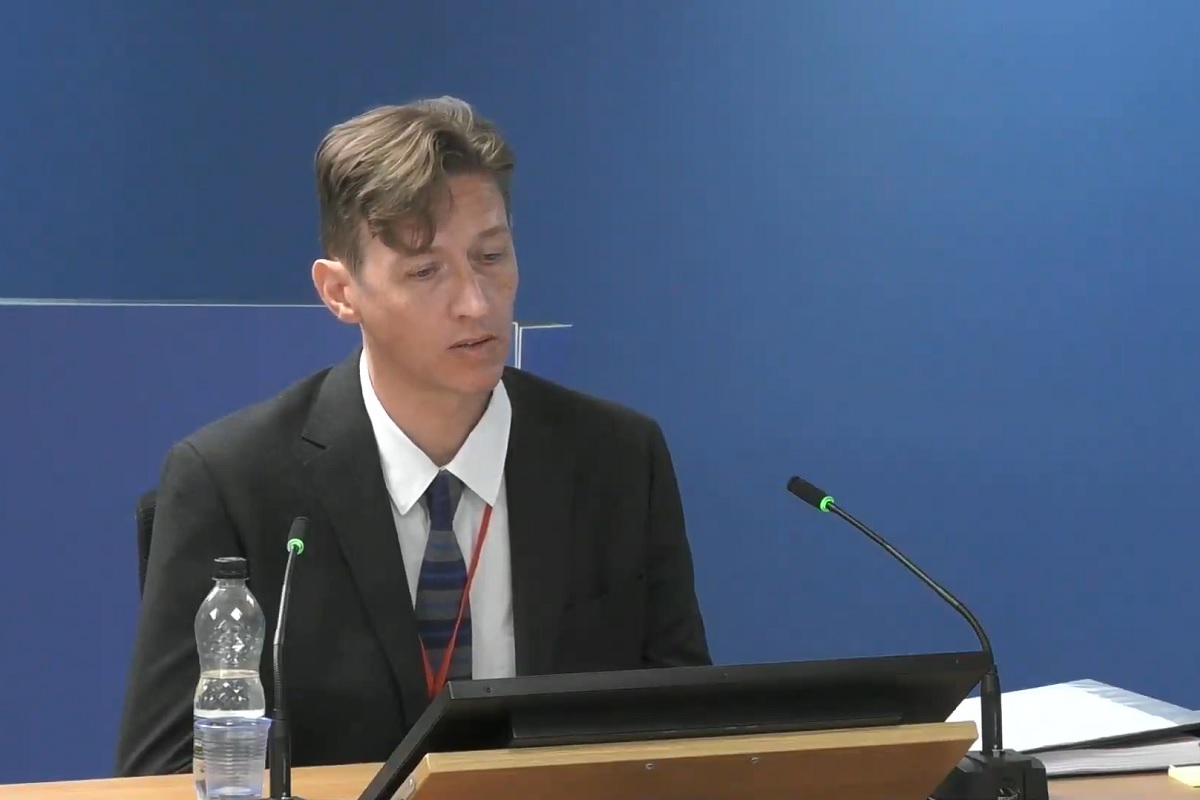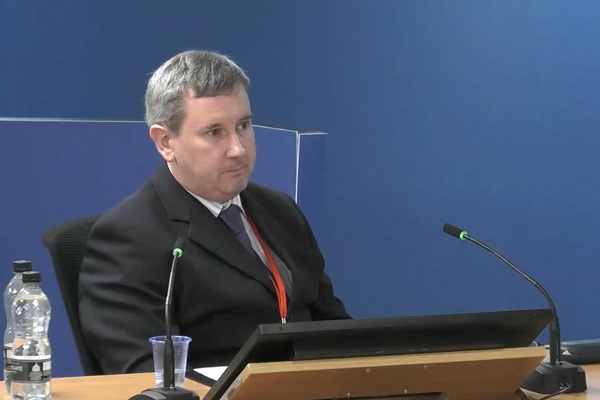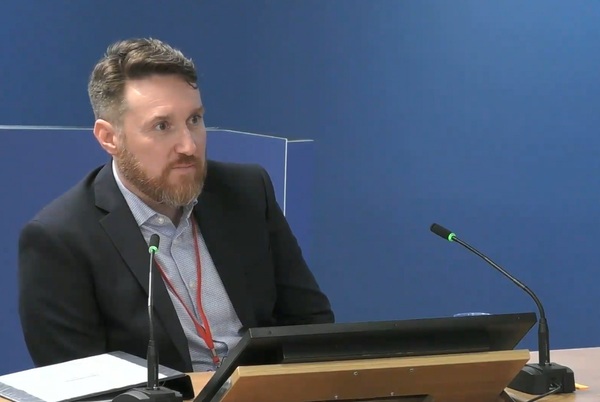You are viewing 1 of your 1 free articles
ACM was ‘cheaper option’, Grenfell Inquiry hears
Aluminium composite material (ACM) cladding was seen as a cheap alternative to the architect’s preferred material for the Grenfell Tower refurbishment, the inquiry into the fire heard yesterday.
Bruce Sounes, who led for architects practice Studio E on the Grenfell refurbishment project, said he had wanted to use zinc for its “appearance”.
According to emails sent by Mr Sounes and seen by the inquiry, Mr Sounes was focused on getting the cladding proposals past Kensington and Chelsea Council’s planning department, with one planner raising concerns about “plastic” and “Croydon”.
But Reynobond PE ACM cladding was included as an option in the November 2013 tender to select the refurbishment’s main contractor – and was subsequently proposed by Rydon, which won the bid due to its low quote of £9.2m.
Mr Sounes told the inquiry that he believed ACM was included because Kensington and Chelsea Tenant Management Organisation – Studio E’s client at this stage – wanted a cheaper alternative.
The refurbishment project had previously stalled because of cost issues, the inquiry heard, with quantity surveyor Appleyards warning in February 2013 that Leadbitter – which was later replaced as the main contractor by Rydon – quoted £483,000 more for the facade than had been budgeted.
Harley Facades, the cladding subcontractor which was later brought on board by Mr Sounes as a means of “de-risking” the project, told him that swapping zinc for “standard ACM” could save more than £500,000.
As the inquiry has heard before, Harley Facades also told Mr Sounes in an email sent in November 2013 that it would prefer to use ACM “from a Harley-selfish point of view”.
The now notorious ACM panels used on Grenfell Tower have been identified by the inquiry as the primary reason why flames were able to spread rapidly across the building on 14 June 2017.
Mr Sounes admitted that he had not thought about the fire performance of the cladding options being considered and said: “We all believed we were choosing cladding products that had been used many times before.”
He also agreed that he did not consider whether fire safety would be compromised by a cheaper product or even that some might be more fire resistant than others.
“Until the night of the fire I had no knowledge that the products came in different varieties of core,” he told inquiry chair Sir Martin Moore-Bick.
Earlier in the day, the inquiry heard how Studio E had opted for a combustible foam insulation rather than non-combustible mineral wool insulation in the interest of trying to meet energy efficiency ratings twice as high as required by building regulations.
However, Mr Sounes said that whether the foam insulation met fire safety standards “wasn’t a serious concern” because he presumed as it charred that it was safe to use.
The Grenfell Tower Inquiry continues.












